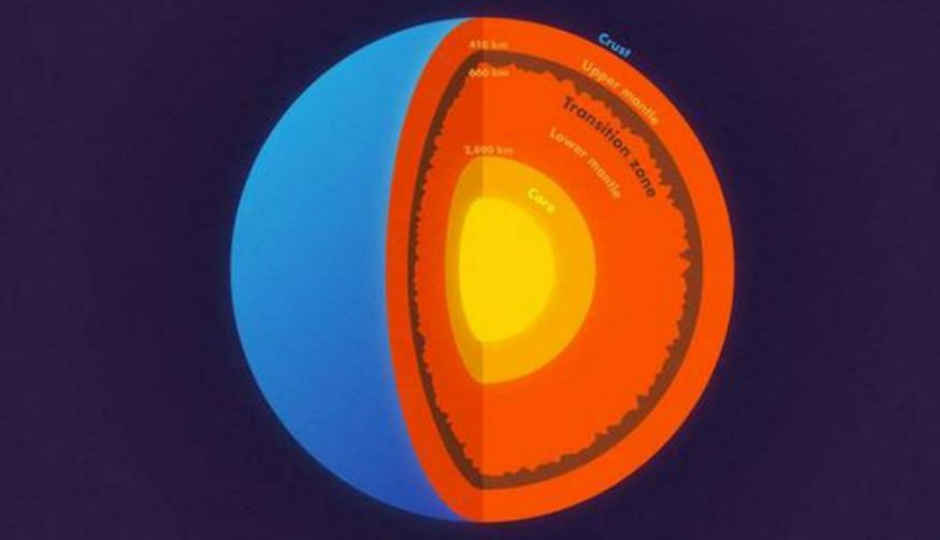 Highlights: Scientists discover massive mountains 660km deep under earth’s surface The precise height of these mountains was not determined The could possibly be bigger than the mountains on the surface of earth Scientists have discovered massive mountains and other topography on a layer 660 km below earth’s surface that separates the upper and lower mantle. The discovery could give scientists a gateway to understand how the planet was formed. According to the study published in journal Science, the scientists from the Princeton University in the US and the Institute of Geodesy and Geophysics in China used the data generated by waves from an enormous earthquake in Bolivia to find mountains. Earthquakes that are magnitude 7.0 or higher send out shockwaves that can travel through the core to the other side of the planet -- and back again. For this study, the key data was collected from waves picked up after a magnitude 8.2 earthquake shook Bolivia in 1994. The earthquake is reportedly the second-largest deep earthquake ever recorded. Scientists simulated the complicated behaviour of scattering waves in the deep Earth to compile the data. Just as light waves, earthquake waves travel through homogenous rocks but reflect or refract when they encounter any boundary or roughness. “We know that almost all objects have surface roughness and therefore scatter light. That's why we can see these objects -- the scattering waves carry the information about the surface's roughness. In this study, we investigated scattered seismic waves traveling inside the Earth to constrain the roughness of the Earth's 660-km boundary,” Wenbo Wu, co-author of the study, said. The scientists, however, were not able to precisely determine the height of the mountains. It is speculated that these mountains are bigger than anything on the surface of the Earth. It was also reported that the roughness of the mountains was not equally distributed. The researchers reportedly examined a layer 410 kilometres down, at the top of the mid-mantle “transition zone,” and did not find similar roughness. Related Read: China's lunar probe lands on the dark side of the moon
Highlights: Scientists discover massive mountains 660km deep under earth’s surface The precise height of these mountains was not determined The could possibly be bigger than the mountains on the surface of earth Scientists have discovered massive mountains and other topography on a layer 660 km below earth’s surface that separates the upper and lower mantle. The discovery could give scientists a gateway to understand how the planet was formed. According to the study published in journal Science, the scientists from the Princeton University in the US and the Institute of Geodesy and Geophysics in China used the data generated by waves from an enormous earthquake in Bolivia to find mountains. Earthquakes that are magnitude 7.0 or higher send out shockwaves that can travel through the core to the other side of the planet -- and back again. For this study, the key data was collected from waves picked up after a magnitude 8.2 earthquake shook Bolivia in 1994. The earthquake is reportedly the second-largest deep earthquake ever recorded. Scientists simulated the complicated behaviour of scattering waves in the deep Earth to compile the data. Just as light waves, earthquake waves travel through homogenous rocks but reflect or refract when they encounter any boundary or roughness. “We know that almost all objects have surface roughness and therefore scatter light. That's why we can see these objects -- the scattering waves carry the information about the surface's roughness. In this study, we investigated scattered seismic waves traveling inside the Earth to constrain the roughness of the Earth's 660-km boundary,” Wenbo Wu, co-author of the study, said. The scientists, however, were not able to precisely determine the height of the mountains. It is speculated that these mountains are bigger than anything on the surface of the Earth. It was also reported that the roughness of the mountains was not equally distributed. The researchers reportedly examined a layer 410 kilometres down, at the top of the mid-mantle “transition zone,” and did not find similar roughness. Related Read: China's lunar probe lands on the dark side of the moonfrom Latest Technology News http://bit.ly/2EgBm9S

No comments:
Post a Comment